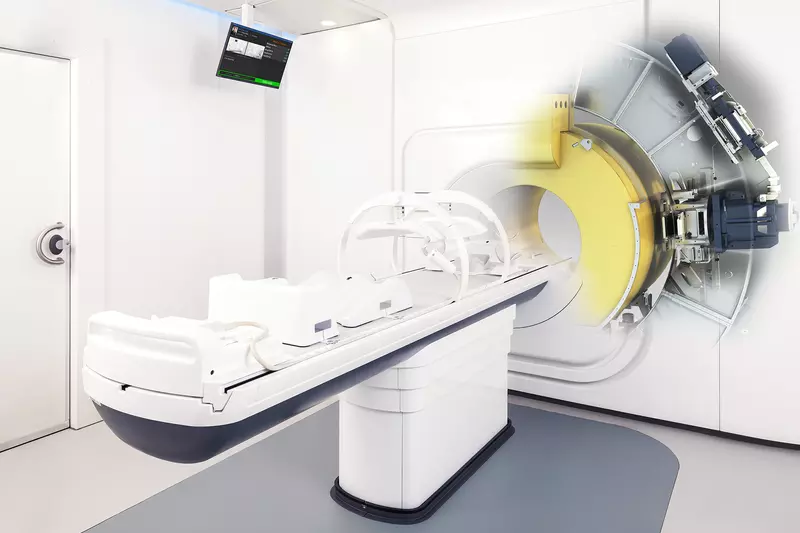- David Marks

Choose the health content that’s right for you, and get it delivered right in your inbox.
For more than a century, radiation therapy has been used to treat tumors, with doctors making every effort to minimize the effects of that radiation on surrounding healthy tissue.
But tumors are often very close to a patient’s healthy organs, making it more difficult to deliver the radiation safely. Even when patients are at rest, their heartbeat and breathing can alter the tumor’s location.
Fortunately, there’s a powerful, new tool in the fight against cancer, offering better outcomes and fewer treatments. MRI-Guided Radiation Therapy delivers clearer pictures and it ensures that the radiation dose accurately reaches the correct area of the body. How? By combining two, critical technologies into a single platform.
First, a state-of-the-art MRI system offers significantly improved soft tissue imaging, which is most helpful in treating cancers that are in areas of the body that move a lot or are near other vulnerable organs.
Second, a next-generation Elekta linear accelerator targets cancer more precisely throughout treatment, even as the tumor’s size, shape and location change.
“This is an important milestone in cancer care for the region. The addition of the advanced MRI- Guided Radiation technology to our cancer therapy options allows us to see and track tumors during treatment and respond accordingly, personalizing therapy for each patient, every time they are treated,” said Bhaswanth Dhanireddy, MD, Board-certified radiation oncologist and Medical Director of Radiation Oncology at the AdventHealth Cancer Institute.
When It Comes to Targeting Tumors, Precision Is Everything
For some patients, with tumors located in the chest or abdomen, it has always been especially difficult to be sure that only the tumor is being targeted by radiation. For example, pancreatic tumors sit right in the middle of the abdomen and are surrounded by healthy organs. And because the tumor and surrounding organs move with each breath, being able to determine exactly where the tumor is during treatment is crucial.
That’s what makes this technology such a game changer. Now, for the first time ever, it’s possible to see tumors with pinpoint precision — in real-time — as they are being treated. The result is smaller and more precise fields of radiation, which spare the surrounding normal tissue. Best of all for patients, treatment courses can be shorter and more accurate. “Because magnetic resonance imaging produces clearer images compared to a CT scan, you can see the cancer — and the surrounding normal structures — significantly better. And when you can see clearly, you can tailor the radiation accurately and precisely,” said Dr. Dhanireddy.
Another key benefit of MRI- Guided Radiation is that doctors can adapt the treatment plan from session to session and come up with radiation plans based on the patient’s anatomy at the time of treatment.
“Adaptive radiation planning offers important advantages over traditional treatment plans, which are generated before treatment starts and then delivered the same way every session, including better outcomes, lesser side effects,” said Dr. Dhanireddy.
While this new technology will be used to treat all types of cancers, it is especially beneficial for tumors where there is typically movement during treatment, including tumors in the liver, pancreas, adrenal and lung areas. Other types of cancer this advanced system will deliver a new level of care to include breast, prostate, kidney and gynecologic cancers, among others.
“Cancer patients who were previously determined unsuitable for radiotherapy can now be considered for treatment, ushering in a new era of hope for patients,” said Dr. Dhanireddy.
The new AdventHealth Cancer Institute is open now and will begin offering MRI-Guided Radiation Therapy later this year.
The Installation Was a Major Production

The arrival of the new technology was carefully timed during construction of the brand new, 76,000 square foot AdventHealth Cancer Institute on the AdventHealth Shawnee Mission campus. The magnet and ring components were hoisted by crane, then carefully lowered through the roof of the building and placed in a room specifically designed around the machine.



